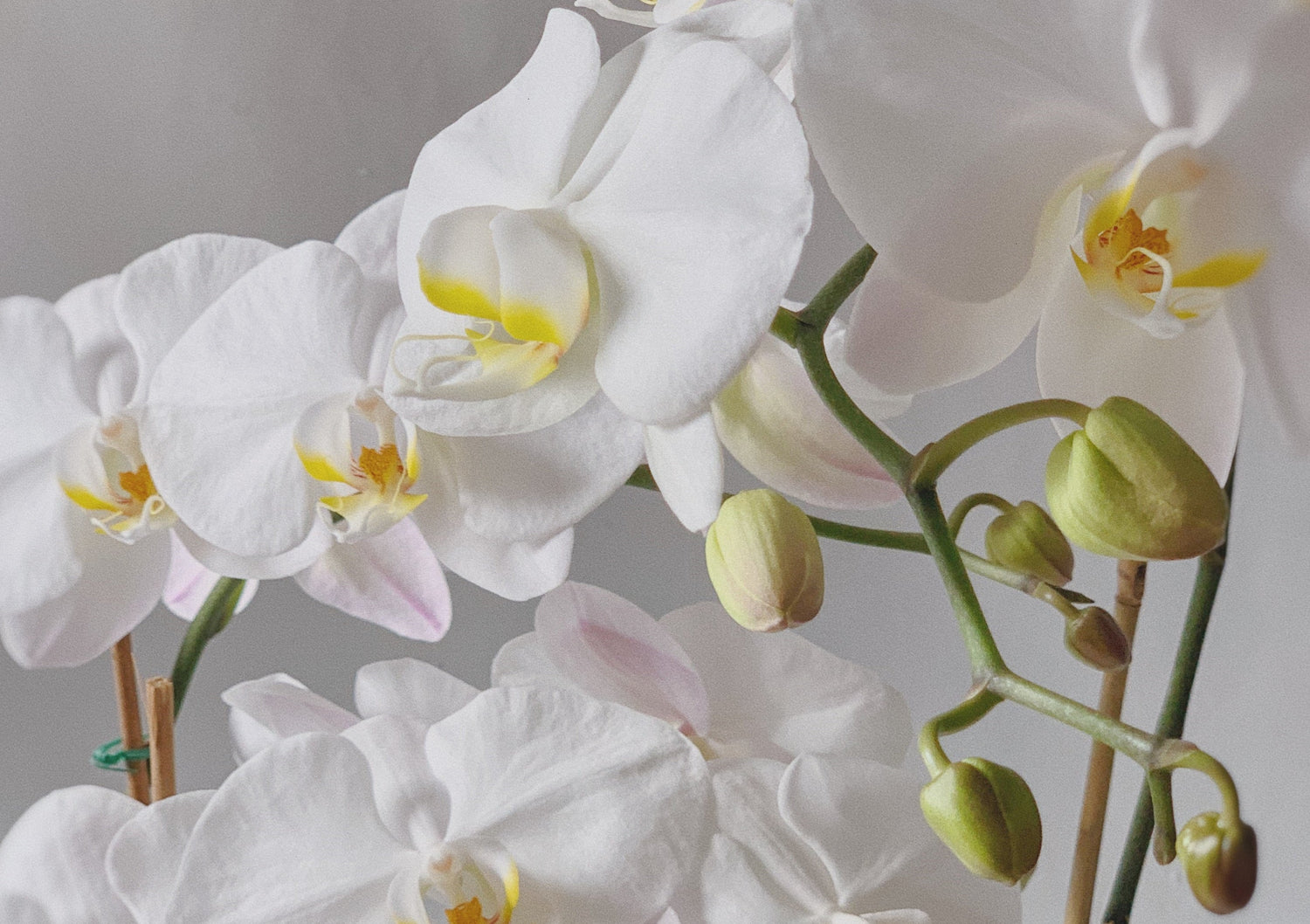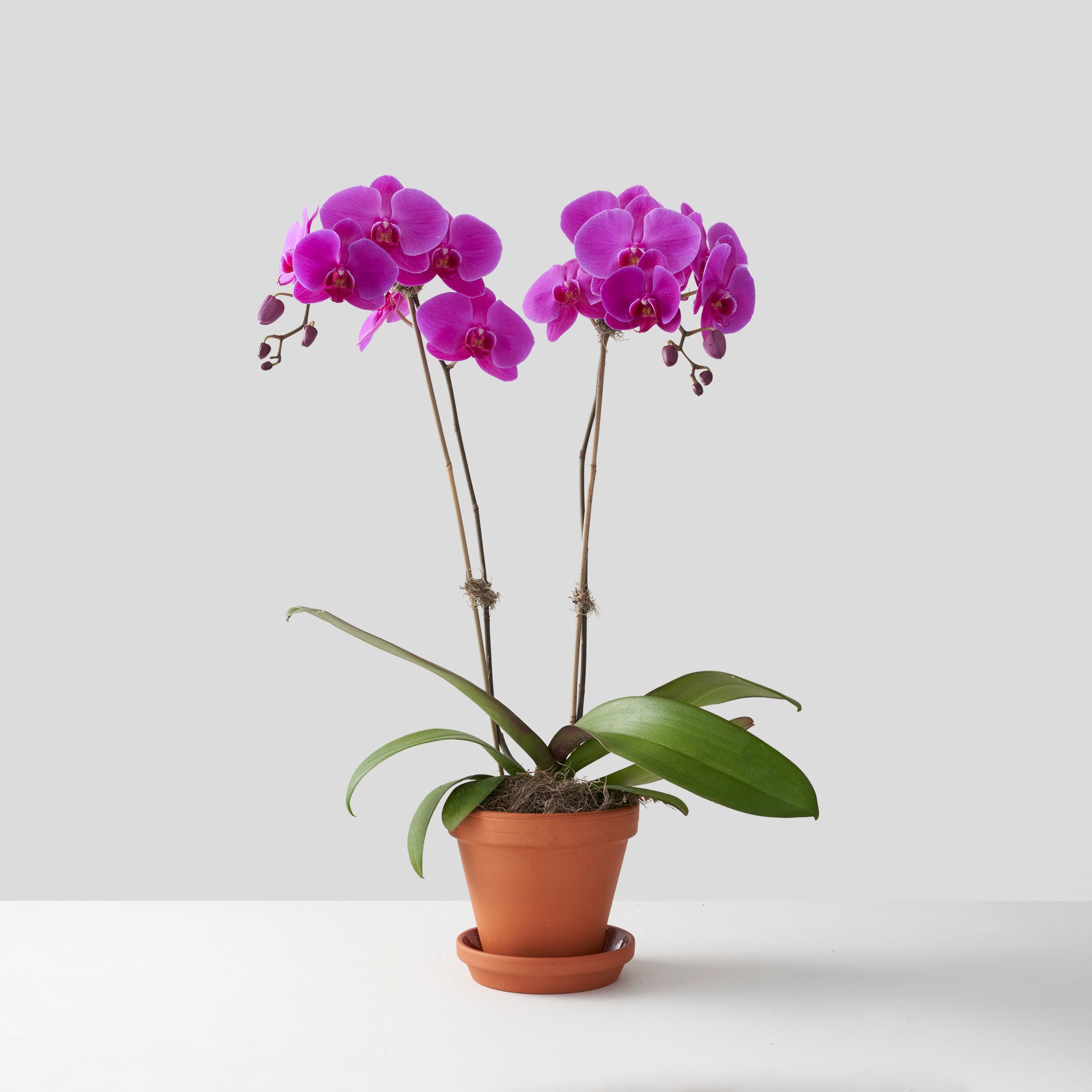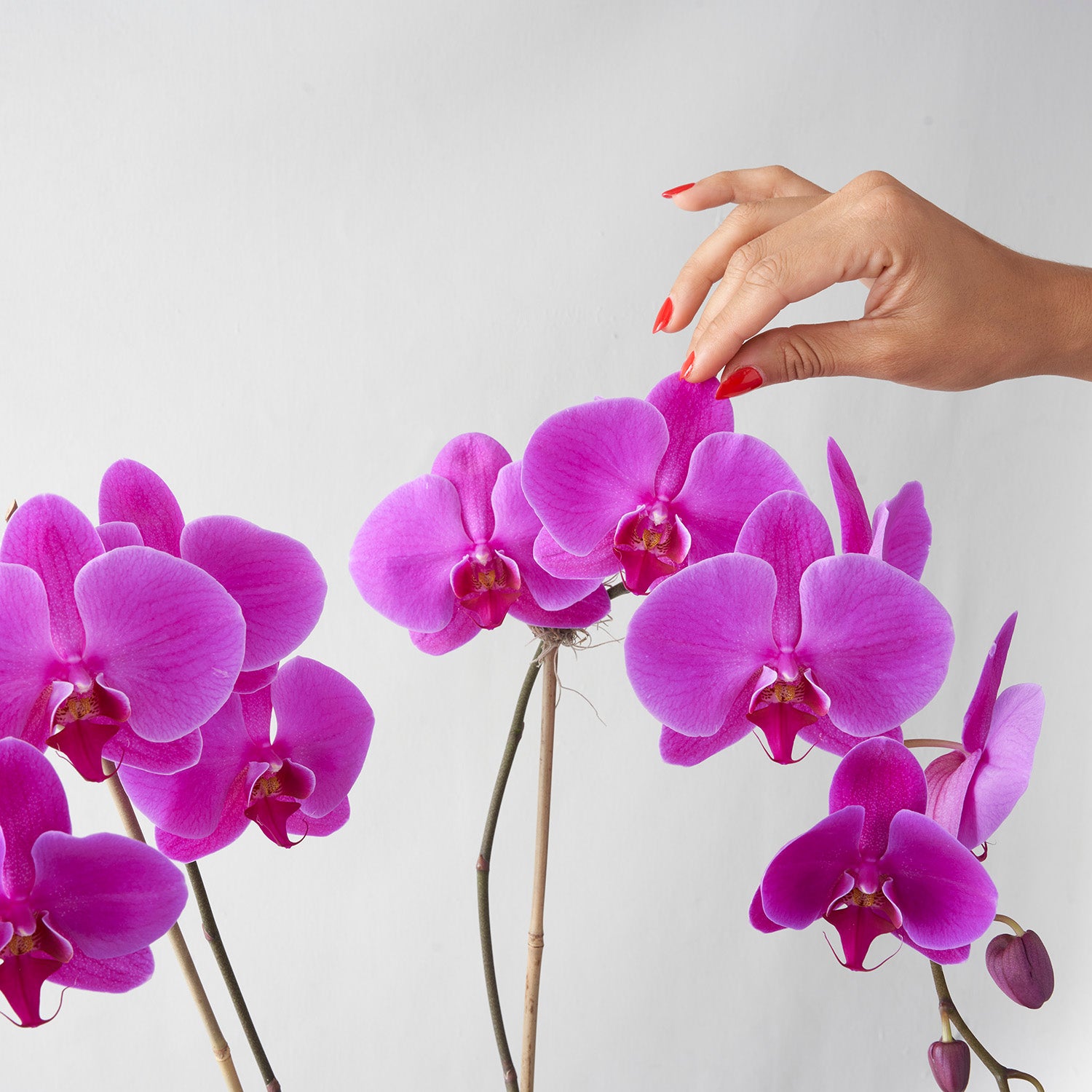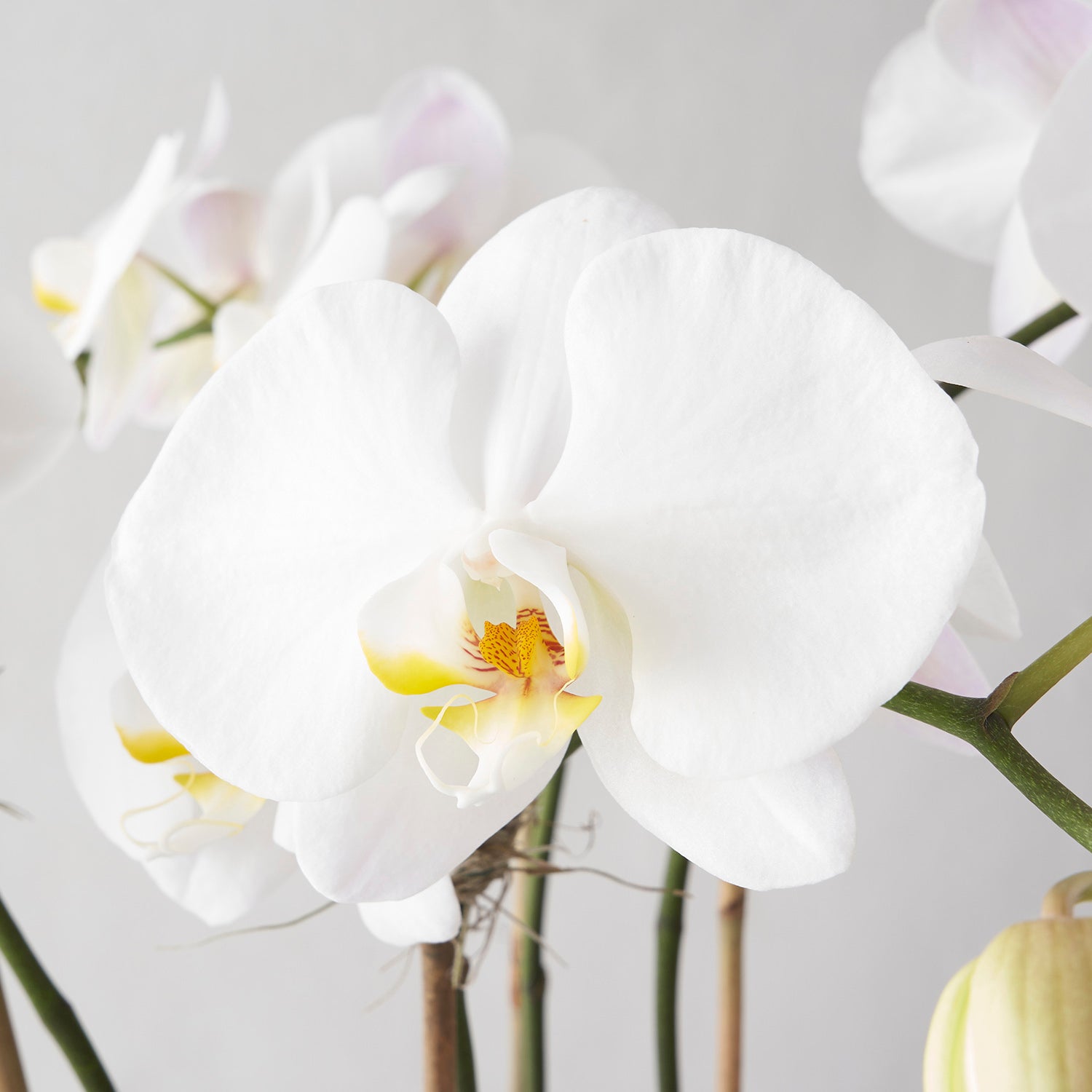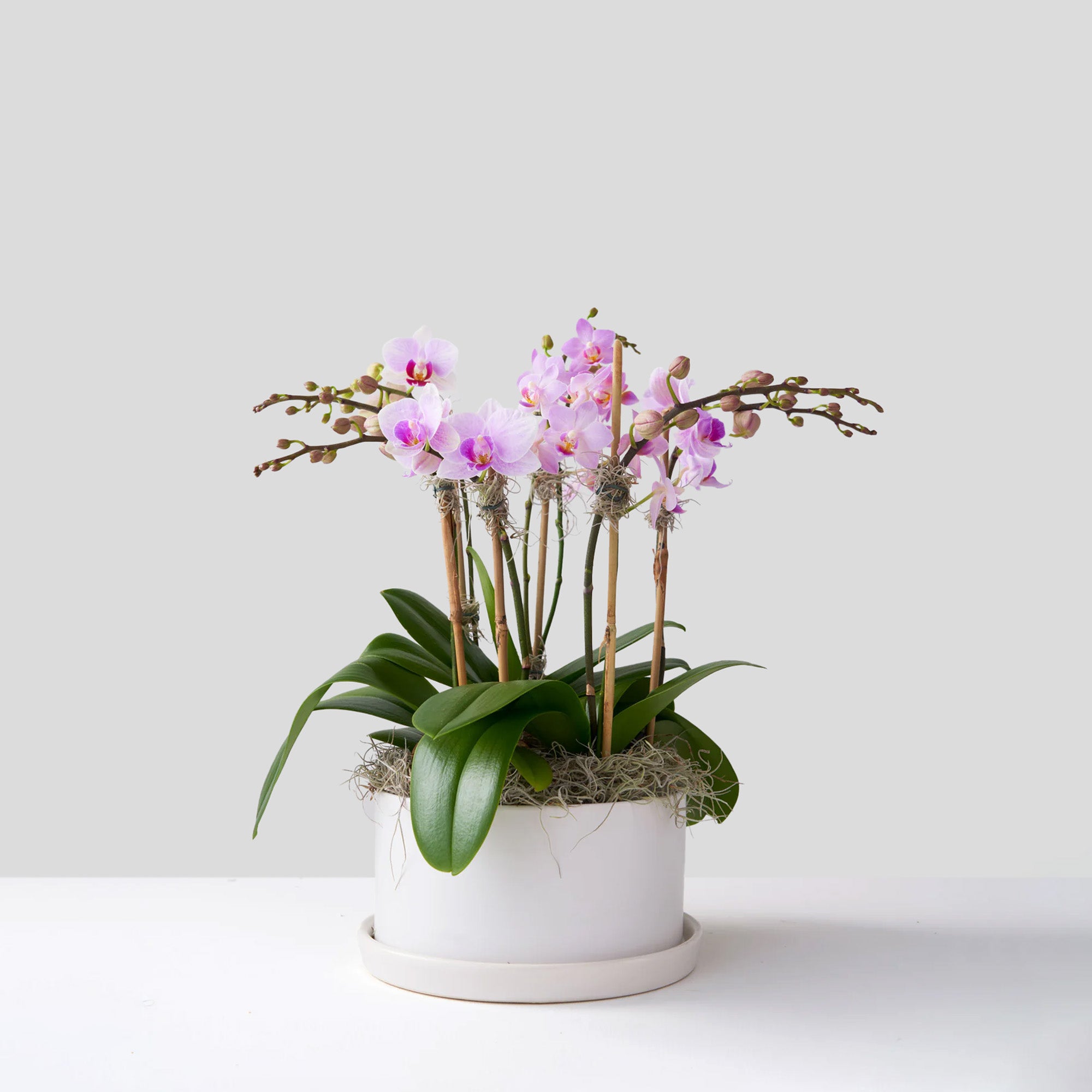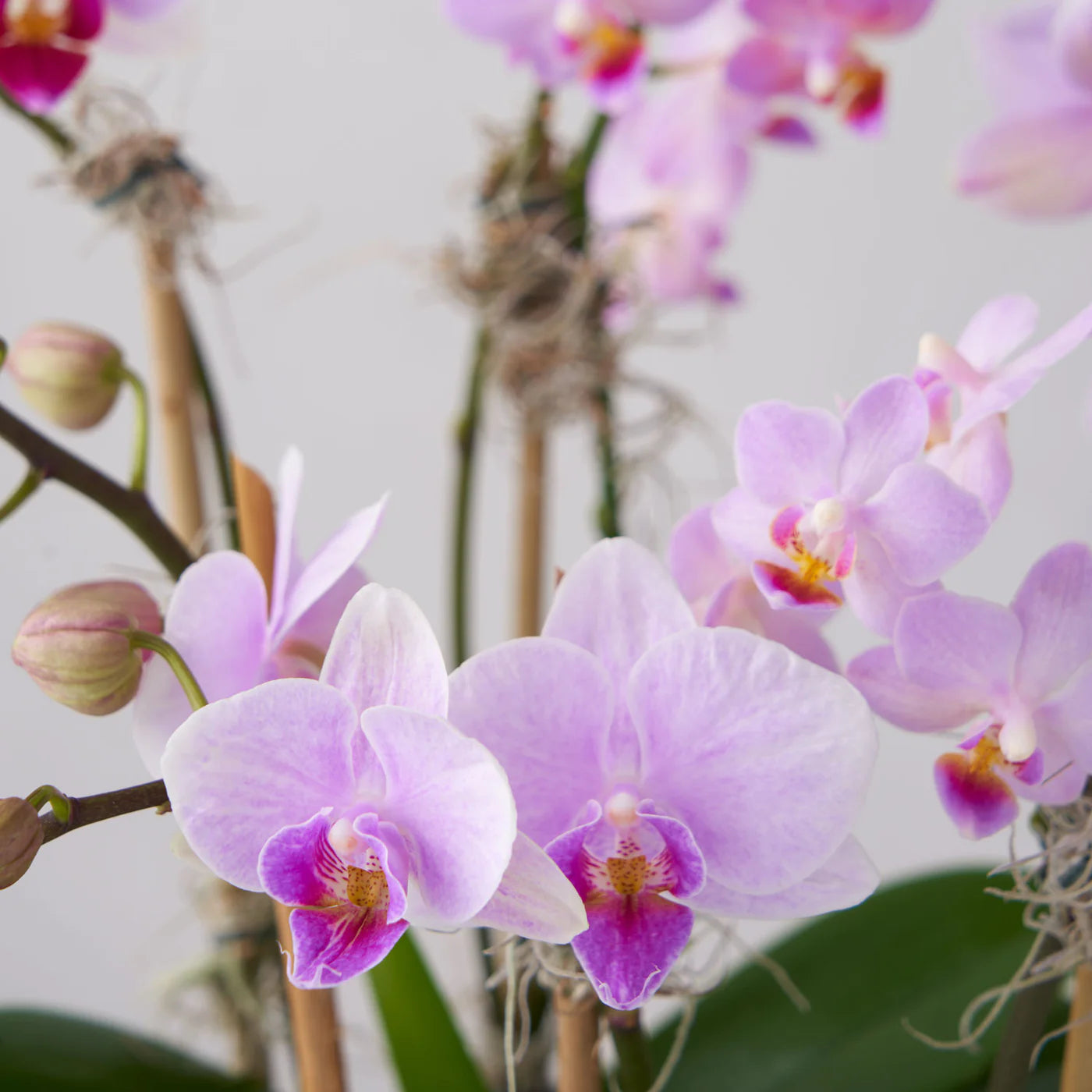Yes, even you can keep indoor orchids thriving and blooming, year after year. Just follow these foolproof tips on how to care for orchids!
Orchids are always in high demand at Westmount Florist. Their magnificent blooms elevate the look of any room with effortless elegance. Whenever customers come into one of our florist shops looking for orchids, the most common question about orchid care we get is: How do I care for an orchid so that it thrives and blooms for years to come?
Below are some simple tips and tricks to keep indoor orchids thriving.
Orchid care tips & tricks
Lighting
Orchids need indirect sunlight. Place your indoor orchid plant in a west or east-facing window.
- If your orchid is getting too much sun, it will tell you that it needs to be.
- Red or purple tinges around the leaves means a risk of sunburn. Relocate the plant to a shadier spot.
- Yellow leaves mean sunburn. If the plant is left exposed to so much sun, the leaves will eventually turn brown and brittle.
Watering
There are different schools of thought when it comes to how much water an indoor orchid plant needs.
Our experts at Westmount Florist all agree that orchid soil should be allowed to dry out before watering. This helps to keep the roots healthy and safe from root-rot (a condition caused by overwatering).
- To know when an orchid needs watering, stick one finger about an inch into the soil. If it feels moist the orchid does not need water.
- Check every few days until the soil feels dry.
There are also different methods for how to water an indoor orchid plant.
We recommend the soaking method, although many people also claim good results with the ice cube method.
We’ve detailed both the soaking and ice cube methods below.
Orchid watering method 1: Soaking method
*The method preferred by the Westmount Florist team.
- Remove your orchid from its decorative pot and bring the plant and its inner plastic container to a sink or water source.
- Allow a slow stream of tepid water to flow into the container and over the leaves (avoid the delicate flowers).
- Once the roots have been fully saturated (around 1 minute), leave the plant to drain for about 10 minutes before returning it to its regular location and pot.
Tip:
Giving your orchid plant plenty of time to drain will avoid a buildup of contained water, which can lead to root-rot.
Orchid watering method 2: Ice cube method
- When a soil check tells you that your plant is dry, place 3 ice cubes on the soil.
- Allow the ice cubes to melt in their own time. The slow melt of the water will saturate the roots.
Temperature
Orchids love warm days and cool nights. 25°C days and 15°C nights are the ideal conditions for an indoor orchid plant to rebloom.
If you have followed steps 1 and 2 and are still having trouble getting your orchid to thrive or rebloom, you may need to consider adjusting the surrounding temperature.
Tip: Orchids do well in daytime temperatures ranging between 21 and 27°C and nighttime temperatures of 15 or 16°C.
How to get orchids to rebloom
The best way to get an orchid to rebloom is to first follow the tips above for proper watering, lighting, and temperature.
You can further encourage an orchid plant to rebloom by cutting back the orchid stem after it has finished blooming.
However, you first need to know what type of orchid you have before cutting back the spike that just bloomed.
Below are guidelines for cutting back an orchid spike on a Phalaenopsis Orchid (aka “Moth Orchid”), which is the most commonly sold orchid.
- Phalaenopsis Orchids often rebloom from the same spike. Generally, if the orchid is healthy and receives proper care, it can take about 6 to 9 months for a Phalaenopsis orchid to rebloom, although sometimes it can take up to a year.
- Cutting back the flower stem when all the flowers are done blooming is more of a personal, aesthetic choice.
- If the flower stem is very green and you can feel a bulge in the notches, the plant may rebloom from that notch.
- If you don’t like the look of a bare stem, count three notches from the base of the spike and cut just above it. Reproducing on a shortened stem is not as exhausting for the plant.
Learn all about orchids in our flower reference guide.
So there you have it! All of our best “how to care for an orchid” tips for keeping your indoor orchid plant thriving for years to come.
If you have questions about how to care for orchid plants, call us or drop in at one of our Westmount or Pointe-Claire flower shop locations. Our staff will be happy to help!
Westmount Florist orchids are available for delivery across Montreal, including the West Island, Laval, Longueuil, and the South Shore.




